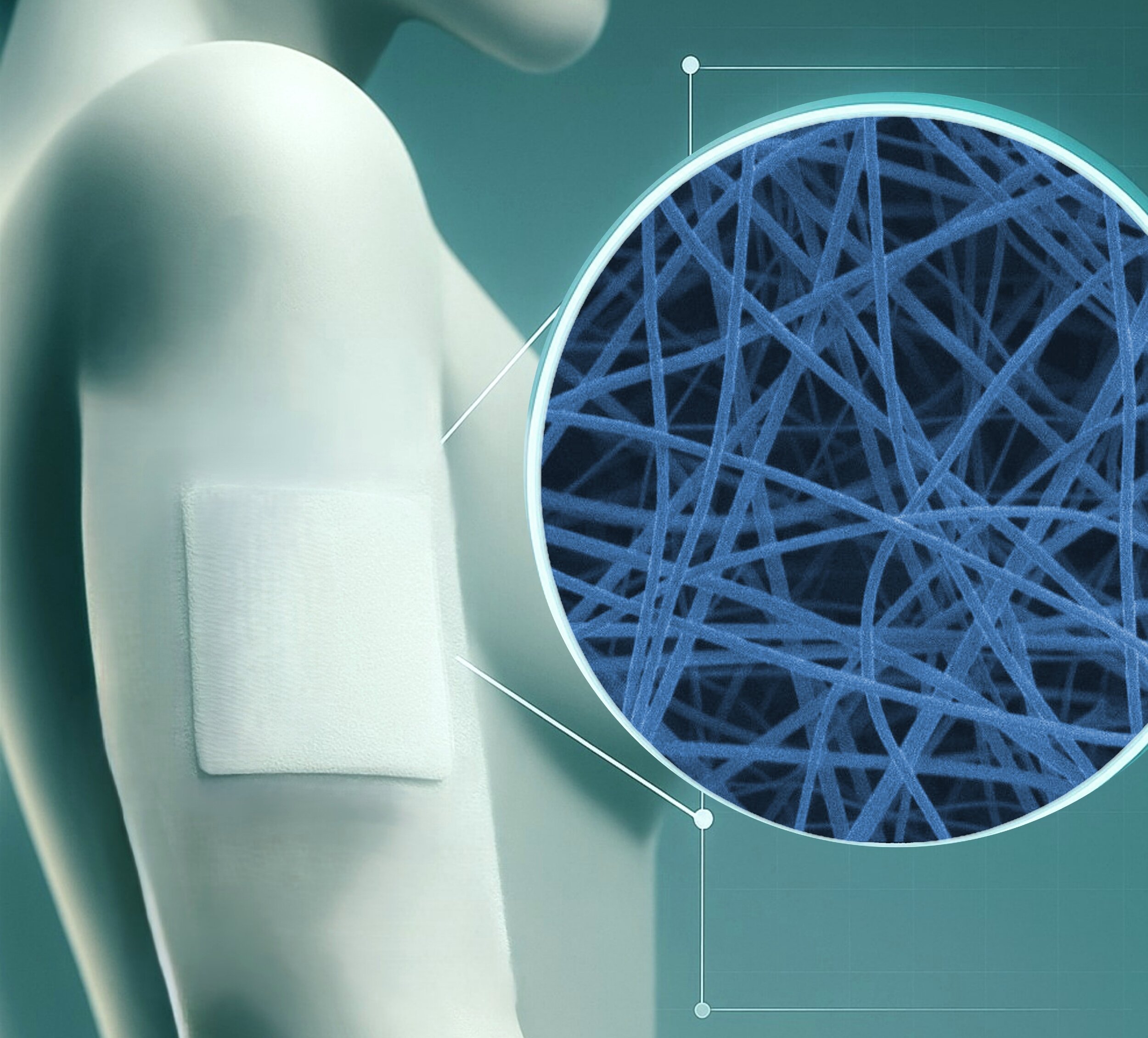In a major step forward for personalised medicine and wound care, researchers at the Henryk Niewodniczański Institute of Nuclear Physics of the Polish Academy of Sciences (IFJ PAN) have engineered a new type of wound dressing that delivers antibiotics exactly where they’re needed – directly to the site of infection.
These innovative dressings, made from ultra-thin polymer fibres, are designed to release the antibacterial drug metronidazole in a controlled and sustained manner, offering a safer and more effective alternative to traditional treatments.
Targeted therapy, smarter healing
The key to effective treatment isn’t just the drug – it’s how and where it’s delivered. Metronidazole is a widely used antibiotic, particularly effective against infections of the skin and mucous membranes. However, when administered systemically, it can circulate throughout the body and cause unwanted side effects.
To solve this problem, the IFJ PAN team developed a delivery system that embeds the drug within a network of polymer fibres. These fibres form soft, flexible mats that can be applied directly to wounds. Once in place, the mats gradually release the drug over several hours, ensuring that the medication stays concentrated at the site of infection while minimising exposure to the rest of the body.

Controlled drug delivery to the body can be achieved using dressings made of electrospun mats, composed of polymer fibers combined with a suitable therapeutic agent. The inset shows a microscopic image of polymer fibers containing the antibacterial agent metronidazole. Credit: IFJ PAN
The Science of electrospinning
At the heart of this innovation is a technique called electrospinning. This process uses a high-voltage electric field to draw a liquid polymer solution into fine threads, which solidify into fibres as they travel through the air. These fibres are collected into a mat that can be customised in structure and composition.
The researchers created two types of fibres: one with a uniform distribution of the drug throughout the fibre, and another with a core-shell structure, where the drug is encapsulated in the centre and surrounded by a protective polymer layer. This second type was produced using a coaxial needle – essentially a needle within a needle – which allows for precise layering of materials.
Maintaining consistent environmental conditions such as temperature and humidity was crucial to producing stable, multilayered mats. The team also carefully controlled the geometry of the system, including the distance between the needle and the collector plate, to ensure uniform fibre formation.
Fine-Tuned for Functionality
Through extensive laboratory testing, the team determined that the ideal fibre diameter for effective drug delivery falls between 0.7 and 1.3 micrometres. This size range provides enough surface area for the drug to be absorbed and released efficiently.
The mats are designed to remain sealed during storage, protecting the drug from degradation. Once applied to a wound, however, they become porous in response to moisture, triggering the release of metronidazole. This smart response ensures that the drug is only activated when it’s needed.
One limitation is that the mats must be used within a month of production. This is due to the natural tendency of metronidazole to crystallize over time, which could affect its therapeutic properties. Nonetheless, the mats are already in a form that could be used in clinical settings, measuring 2×2 cm and ready for further testing.
A Platform for Broader Applications
While the current focus is on metronidazole, the researchers emphasise that the technology is adaptable. The same electrospinning method could be used to deliver other drugs, making it a versatile platform for future therapies.
“Our goal was to create a delivery system that ensures the drug stays where it’s needed and works over time,” explains Prof. Ewa Juszyńska-Gałązka, one of the project’s lead scientists. “This method could be applied to a wide range of medications, ” she adds.
The project also serves as a training ground for young scientists. M.Sc. Olga Adamczyk, who began her research on drug-loaded fibres under the supervision of Prof. Małgorzata Jasiurkowska-Delaporte, plans to continue this work as part of her doctoral studies.
“Designing the right polymer for a specific drug is a complex challenge,” says Adamczyk. “When you confine a molecule to a nanoscale environment, its behaviour can change in unexpected ways. That’s where the real science begins.”
IFJ PAN: A Hub of scientific excellence
This breakthrough is just one example of the cutting-edge research taking place at IFJ PAN, one of the largest institutes of the Polish Academy of Sciences. The institute’s work spans a wide range of disciplines – from particle physics and astrophysics to medical applications and environmental protection.
With over 600 scientific publications annually and state-of-the-art facilities like the Bronowice Cyclotron Centre, IFJ PAN is a leader in both fundamental and applied research. The institute’s commitment to interdisciplinary collaboration and innovation continues to place Poland at the forefront of global science.
Toward a healthier future
As the world grapples with rising antibiotic resistance and the need for more personalised healthcare, innovations like these offer a glimpse into the future of medicine. By combining advanced materials science with biomedical engineering, Polish researchers are not only improving patient outcomes –they’re redefining how we think about healing.
The next step? Clinical partnerships and further testing. With the groundwork laid and the science sound, these smart wound dressings could soon become a staple in hospitals and clinics around the world.
Sources
Revolutionary Smart Drug-Delivering Bandage Developed by Polish Scientists
Wound dressings made of drug-releasing polymers | EurekAlert!
Electrospun polymer fiber mats enable controlled release of antibacterial drugs for wound care


